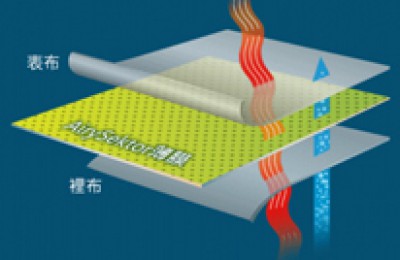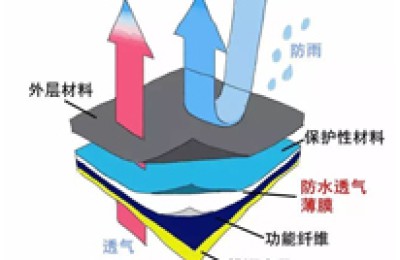Now panic has spread to Southeast Asia. Investors and manufacturers are swaying over Thailand, Southeast Asia’s largest car production hub. According to the Wall Street Journal, at least six automakers including General Motors, Ford and Toyota have warned that the political unrest in Thailand since November will have an impact on their sales. Among them, Toyota said it would reconsider its plan to expand truck production capacity in Thailand by up to US$610 million.
The Wall Street Journal also reported that rising wages and political tensions in Thailand have prompted overseas automakers to consider investments in lower-cost countries such as Vietnam and Laos. In addition, the attractiveness of Indonesia and Malaysia is also increasing.
However, after experiencing two rounds of market fluctuations since last year, I am afraid that all manufacturers will have to reassess the risks of these emerging market countries.

In the context of the United States withdrawing from quantitative easing, the ability of emerging economies to adjust is worrying, especially in some countries with relatively serious problems. From May to June 2013, exchange rate crises broke out in emerging economies such as Thailand, Indonesia, and Malaysia. , then in January 2014, an exchange rate crisis broke out in emerging economies such as Turkey, South Africa, Vietnam, and Indonesia. The exchange rate crisis itself showed that it was bearish on the economic prospects of these countries.
Among them, Brazil, South Africa, India, Turkey and Indonesia have even been dubbed the “Fragile Five”.
Russia, which is hosting the Winter Olympics, is not optimistic either. Since the beginning of this year, the Russian ruble has depreciated against both the U.S. dollar and the euro. The depreciation has triggered panic among the people, and there has even been a wave of runs in some areas. This is undoubtedly a huge blow for Russia, which is trying to enhance its national image by hosting the Sochi Winter Olympics.
It is worth noting that amidst the “depreciation” of currencies in emerging markets, the RMB stands proudly. Data compiled by Bloomberg show that since 2014, among the world’s 24 major emerging market currencies, only the RMB has appreciated against the US dollar, while the rest have depreciated across the board.
In this regard, Tang Yunfei, chief analyst of Founder Securities, believes that China’s economic growth will be higher than that of Europe, the United States, and Japan in the long term, and will be higher than the world average for a long time. As long as the United States does not enter a dangerous state, the RMB may undergo technical adjustments in a short period of time. However, the trend of continued appreciation in the medium and long term will not change. This view of China’s steady economic growth is obviously not an isolated case.
Is China’s slowdown in wage growth a good thing?
The stable situation of China’s economy may be the biggest advantage of investing in manufacturers, but before this, rising labor costs in China have been the biggest problem plaguing companies in China, especially manufacturing companies, which are particularly sensitive to labor costs. However, there are increasing signs that China’s wage growth has slowed significantly.

Deutsche Bank economist Peter Hooper reported in July 2013 that since the outbreak of the global financial crisis, China’s wage growth has slowed down significantly, which is also in line with the trend of declining economic growth.
After annual growth peaked at 19% in 2007 (averaging 15% between 2002 and 2008), average wage growth for urban workers has slowed to 12%. After adjusting for inflation, real wages are only about 13% higher than before the crisis.
Strikingly, wage growth so far in 2013 has been lower in both nominal and real terms than in 2009. The slowdown in wage growth is mainly due to the stagnant growth of the labor force, and the cyclical weakness in demand has offset the structural weakness in supply.
Coincidentally, Goldman Sachs analyst Deng Minqiang also stated in a report in August 2013 that China’s wage growth has slowed in tandem with output, thus buffering the impact on employment.
At the same time, the status of Chinese manufacturing in the industrial chain is also rising. According to survey data by American scholar Dan Steinbock, in 2012, emerging market countries surpassed developed countries for the first time to become the places receiving the most foreign direct investment. One of the reasons is that global innovation is shifting to Asia, especially China.
A report by the U.S. National Science Board shows that the world’s high-tech center of gravity is shifting to Asia, especially China. China’s share of the world’s high-tech manufacturing reached 24% in 2012, only slightly lower than The United States accounts for 27%.
Bad PMI data in January? Don’t ignore the all-round impact of the Spring Festival on China’s economy. Everyone is going home. What is really worth worrying about is the appreciation of the RMB.
The critical point that changes the trend of RMB appreciation
The strong RMB has prevented China from suffering large-scale capital outflows, but it has gradually dragged down the development of the export industry. Customs data shows that China’s export growth rate dropped to 4% in December last year, a growth rate far lower than 11 12.7% of the month. The annual export growth rate of 7.9% did not reach the target of 8%.
A Wall Street Journal report shows that due to rising wages and declining productivity, it costs more to produce Airbus A320 aircraft in Tianjin than in Tulu, France.The cost of � is 10% higher.
This means that the appreciation of the RMB will erode China’s export competitiveness, cause export companies to close down, and then cause employment pressure. In particular, some labor-intensive and low-value-added export enterprises have indeed encountered difficulties and have been shut down.
Li Peng, secretary-general of the Asian Footwear Association, said that since the outbreak of the financial crisis in 2008, footwear companies in Guangdong Province have moved one-third of their production to inland cities in China, and another third to Southeast Asia. nation. As wage growth slows and Southeast Asian countries encounter economic difficulties, the signs of manufacturing relocation will be curbed.
Chetan Ashiya, an economist at Morgan Stanley in Hong Kong, also said it is too early for manufacturers to shift orders away from China based on currency fluctuations. But he warned it could become a more important factor this year. According to a survey by Global Sources Enterprise Network, Chinese companies surveyed generally believe that the biggest challenge in 2014 is the appreciation of the RMB.

However, judging from the current analysis of all parties, the trend of RMB appreciation will not turn around in 2014, and it is even generally believed that breaking 6 is a high probability event. And the decision-makers also have enough reasons to support the continued appreciation of the RMB:
Since the exchange reform in 2005, the RMB has appreciated by about 36% against the US dollar. So far, there has been no large-scale bankruptcy of export companies. Instead, the trade surplus has increased from US$102.1 billion in 2005 to US$102.1 billion at the end of 2013. $259.75 billion. This shows that China’s export sector is much more resistant to exchange rate pressure than imagined.
As long as there is no economic imbalance and rising unemployment in the process of getting rid of dependence on exports and heavy industry, and political pressure from major trading partners can be avoided, there is still room for the RMB to appreciate.




